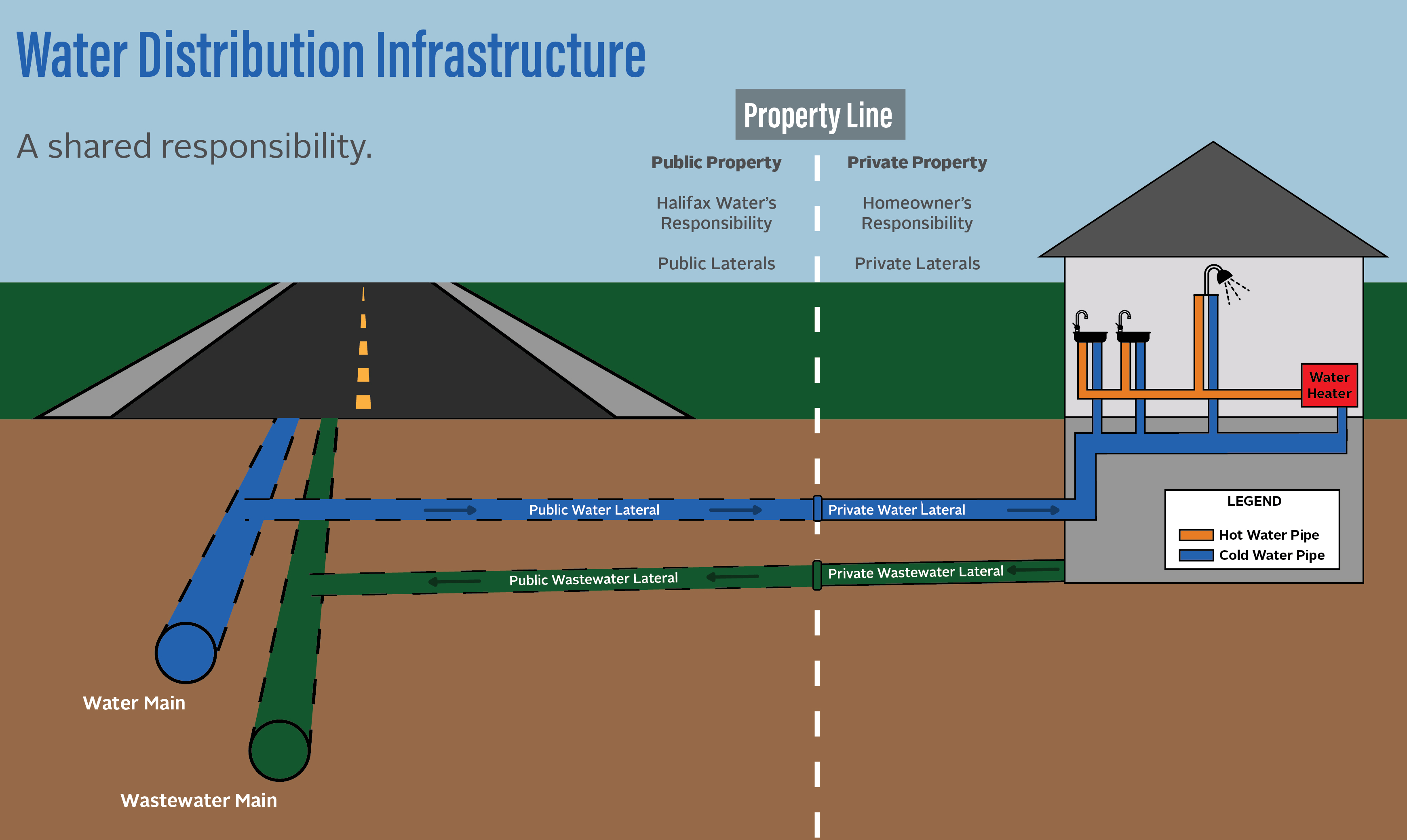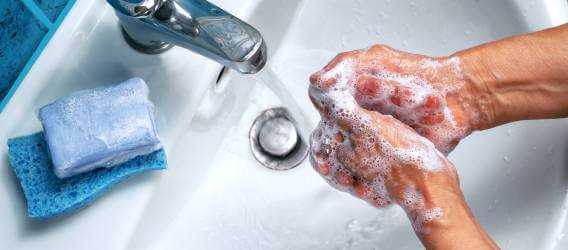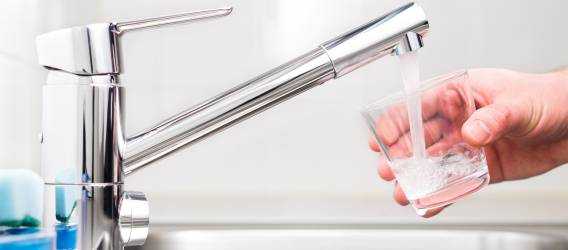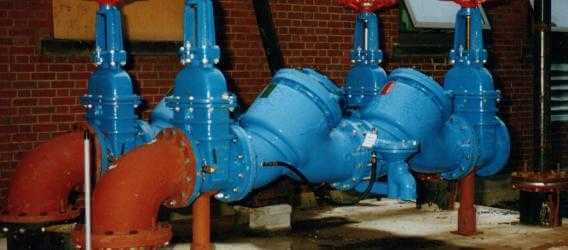Halifax Water remains committed to providing you with safe, high-quality water during the COVID-19 pandemic. The disinfectant we use to treat the water, chlorine, kills water-borne viruses. We deliver this water to the property line. Building owners are responsible for water quality and maintenance of piping networks from the property line to each tap.
When buildings are closed or have fewer people than normal, there is less flow of water in the building, which can result in loss of disinfectant residual, which, in turn, can affect the safety of the drinking water. Routine maintenance of mechanical components may have also been suspended, which can also lead to water quality issues.
What is a building water system?
-
A building water system is the privately-owned piping that supplies and distributes water to various fixtures and appliances inside a building.
-
Halifax Water is responsible for maintenance and water quality within water mains and the public water lateral up to the property line, as shown in the figure below.
-
The building water system and its maintenance, use, and water quality is the responsibility of the property owner. Ownership and responsibility start at the property line and includes the private water lateral, all plumbing, storage and fixtures within the building.
What happened in my building water system while the building was out of use?
-
Due to the COVID-19 pandemic, many people are working from home. This leaves buildings with little to no water use for weeks at a time.
-
Throughout the COVID-19 pandemic, Halifax Water continues to maintain high-quality drinking water. There is no risk of COVID-19 being in treated water as it is destroyed by the treatment process.
-
During periods of low or no occupancy, the water in a building’s water system becomes stagnant, and the chlorine disinfectant in the water dissipates.
-
Without chlorine disinfectant, microorganisms can grow on plumbing fixtures and inside tanks. Some of these microorganisms, such as Legionella pneumophila, which causes Legionnaires’ disease, can be harmful to health if consumed or inhaled as droplets.
-
Stagnant water can also lead to chemical changes in the water, and the protective scale on pipes may be affected. This impact on the scale can result in the release of metals like lead, iron and manganese into the water.
-
-
Mechanical systems within buildings such as cooling towers, boilers, pumps, backflow preventers or additional point of use or point of entry treatment systems may not have received routine maintenance.
How do I maintain water quality in my building water system during periods of low or no occupancy?
-
Flushing: The best immediate action is to flush the entire building, including all water-using appliances like ice machines and dishwashers. Flushing replaces stagnant water with high-quality water from the distribution system.
-
Depending on the building, mechanical systems may be complex, and flushing may impact treatment, storage or piping systems. In these situations, a mechanical contractor should be consulted prior to implementing a flushing program.
-
Flushing should start as soon as possible and be conducted on a regular basis throughout the period of low or no water use.
-
Flushing involves refreshing the water supplied to all plumbing fixtures, such as faucets and showers, and water-using appliances, such as dishwashers and ice machines.
- Appropriate PPE should be worn by those performing flushing activities to minimize exposure to aerosols that could contain legionella bacteria.
-
- Maintenance: Continued inspection and maintenance of mechanical equipment within the building water system.
-
Disinfecting building water systems: Disinfecting buildings with a concentrated chlorine solution should only be considered if there is a strong reason to believe the building is contaminated with pathogens like Legionella pneumophila and/or the people who use the building are particularly susceptible to infections like Legionnaires disease.
-
If additional disinfection of the building water system is required, plans should be developed in consultation with trained personnel to ensure the health and safety of workers, building occupants and mechanical components within the building water system.
-
In most cases, flushing buildings with water that contains disinfectant from the distribution system is sufficient for cleaning the water system.
-
How do I conduct a flush of the building water system or implement a water safety or management plan for my building?
Flushing Guidance in Response to COVID-19:
-
VIDEO - Flushing Your Water Lines (Courtesy of Louisville Water Company)
-
Nova Scotia Government: Reopening Buildings on Municipal Water Supplies
-
Canadian Water and Wastewater Association: Safely Re-opening Buildings
-
Quebec: Recommendations for restoring service to water distribution systems in vacant buildings
-
American Water Works Association: Coronavirus: Shutoffs and return to service guidance.
-
Purdue University Center for Plumbing Safety Building Water Safety in Response to COVID-19 FAQs
-
Information on Maintaining or Restoring Water Quality in Buildings with Low or No Use
Legionella Control in Building Water Systems:




